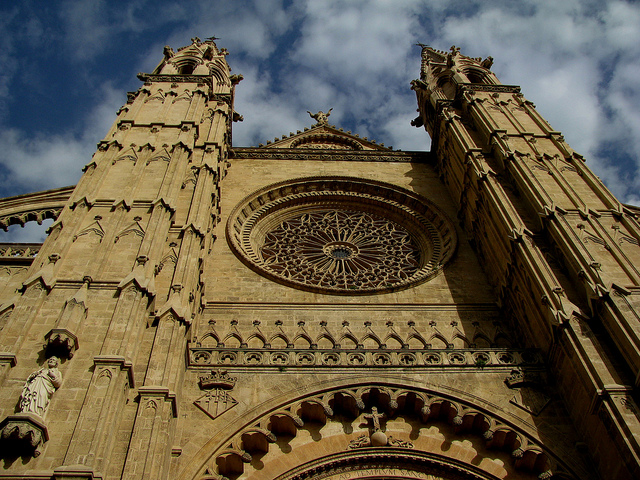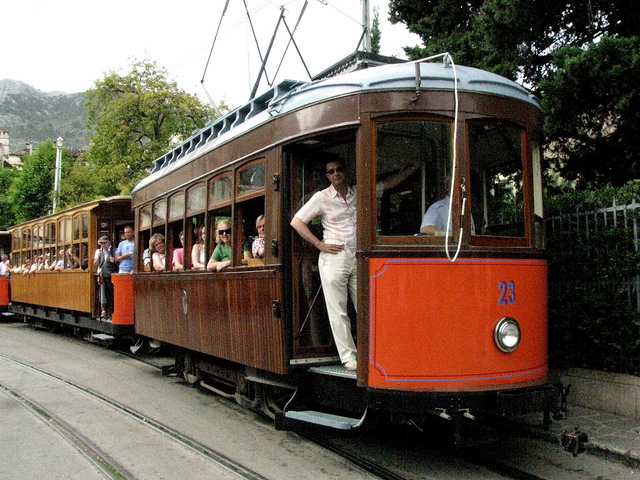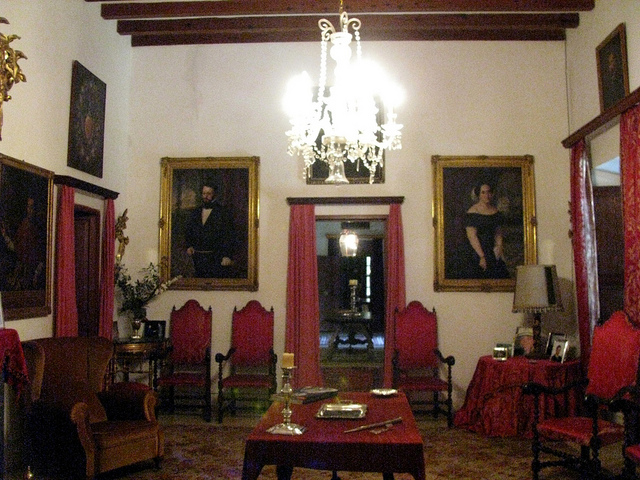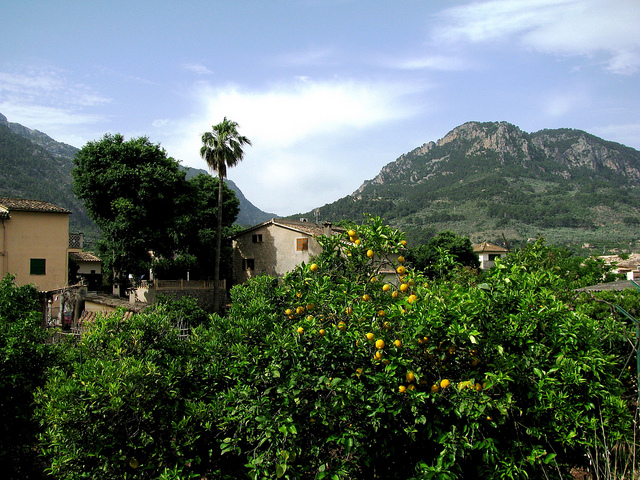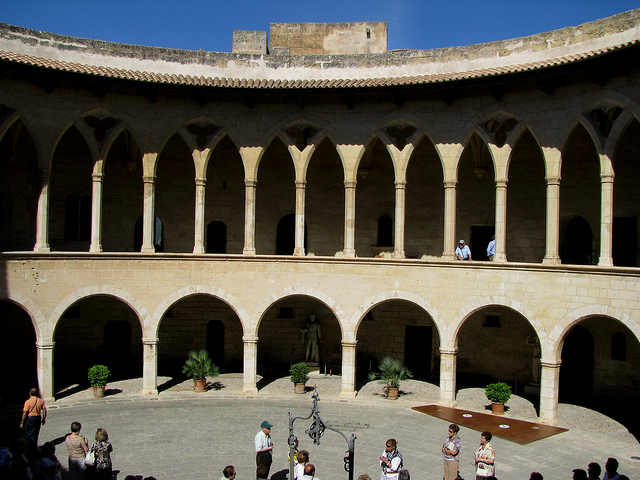Through the narrow streets of the Old City we reached the jewel of Palma: La Seu, which was built between 1229 and 1601, on the site of a pre-existing mosque. With its length of 155 metres and its 44 metre high nave, it is one of the largest cathedrals in Europe.

Western facade of La Seu, Palma’s magnificent cathedral
The Gothic exterior with its flying buttresses is impressive, and the golden limestone was glowing in the late evening sun. The interior features 14 octogonal pillars that support a vaulted ceiling. The magnificent rose window on the east side has a diameter of 12 metres (40 feet) and contains 1,200 pieces of stained glass. A wrought-iron chandelier designed by Antoni Gaudi overhangs the altar. The cathedral also holds the tombs of Jaume II and Jaume III. An organ concert was just starting as we admired this imposing cathedral, and we sat down for a good twenty minutes to enjoy the impressive sounds of the organ.

View towards the altar of La Seu, with Gaudi’s chandelier
Across from La Seu is the Palau de’l Almudaina, an Arab word for “citadel”. Built on the walls of the original Arab fortress, this was the royal residence of King Jaume II. The Gothic-era palace also includes a variety of Moorish-style details. Just north of this palace is the Plaça de la Reina, a large public square that adjoins the gardens of the Palau de’l Almudaina.

Monument on the Plaça de la Reina
Further up the Calle Conquistador we saw the government building of the Balearic Islands and Palma’s City Hall on Plaça Cort. This public square features a very large, gnarly and old olive tree which is a favourite spot for tourists to pose for photographs. Through the narrow Calle Colom shopping street we reached the Plaça Major, Palma’s main square, which is surrounded on all four sides by adjoining buildings with an identical façade. A lone guitar player was entertaining the café crowd with his passionate Flamenco melodies.

City Hall of Palma de Mallorca
We continued on through more narrow streets to finally reach the Plaça d’Espanya, Palma’s transportation hub. This large square is anchored by the Estació Intermodal, which is the city’s bus and railway terminal. We went down the escalators and explored this ultra-modern public transportation complex and admired the colourful artistic armchairs and furniture arrangements that were exhibited in the station’s café.

Colourful armchair at the Estació Intermodal
As it was now starting to get dark we turned around and made our way back through the narrow streets of Palma’s Old City. It was amazing to see cars coming at us in these very narrow passageways although on this Sunday the streets were extremely quiet. We continued to be fascinated by the “garbage machines”, bronze-coloured metal garbage collectors that, with their round heads and square bodies, appeared like aliens, ready to devour civilization’s garbage.

Walking through the old streets of Palma: the alien-looking garbage machines
The sun was setting by the time we had reached our car and drove back westwards on the Passeig Maritim towards our home base in Palmanova. The sunset produced orange-coloured flames that were dancing playfully in the waters of Palma Bay. We had spent another beautiful day in Mallorca.

The sun is setting behind the Cathedral in Palma
